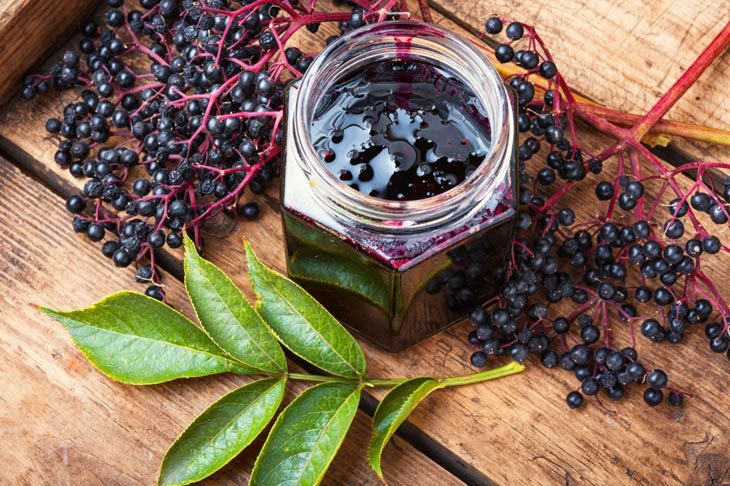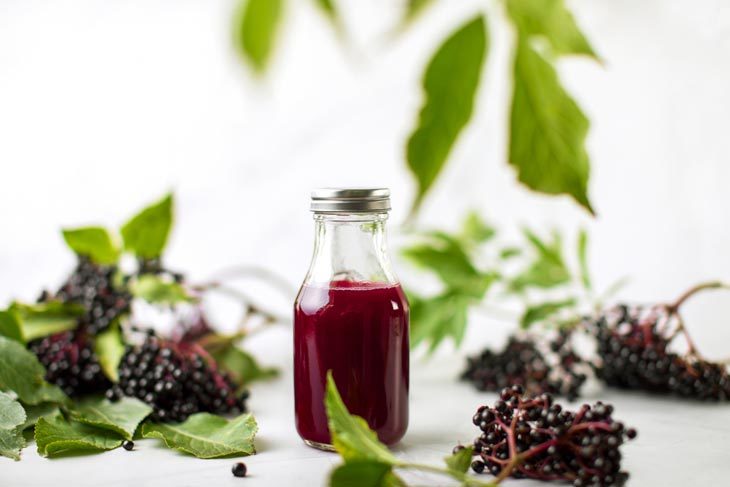What Do Elderberries Taste Like
If you have ever tried elderberries, you will surely be impressed by their distinctive and strange flavor. This berry is only common in certain regions, such as temperate and subtropical zones. Elderberry likewise mostly grows wild and develops in streams or forests in the northern areas.
Therefore, finding elderberries is not an easy task, as many people assume. Those who have never tasted this fruit may wonder: What do elderberries taste like? In this article, we will share with you their flavor based on our experiences.

What Are Elderberries?
Elderberries, also termed Elder or Blackberries, belong to the Sambucus group in the Adoxaceae family and other species. They have a wide range of varieties, while the most common ones are European and American elderberries.
However, they are not as popular as other berry types you have known before, for example, strawberries or raspberries.
They grow and expand in the form of small trees and shrubs. The average height of the above types is about 15 feet, whereas the rest can develop and grow up to more than 30 feet in height.
The barks contain grooves alongside and switch tones from light gray to shaggy shade when the trees mature. They will grow vigorously and bloom from the end of August every year.
What do elderberries look like? These fruits can be green or red, and when ripe, they will have a dark purple color like small black balls.
What Do Elderberries Taste Like?
If you have ever eaten elderberries once, the delicious and nutritious taste of these berries will bring you an impressive sense. That’s because the elderberry taste is not too sweet but tart-like and mineral-like, somewhat similar to gooseberry fruits. Because of the balanced flavor, you can serve them with both sweet and sour fruits.
In contrast, some elderberries taste bland because of up to 83% of water content. Despite their semitransparent and plump skin, within that chili-pepper size are several seeds.
To make it easier for you to imagine elderberries flavor, they taste and smell almost like a combination of raspberries and blueberries, slightly sour and bitter along with a crunchy texture.
When prepared to add flavoring in foods and beverages, they have a much sweeter, more savory, and succulent elderberry taste. We’ll share some recipes with elderberries below, so stay tuned!
Are Elderberries Poisonous?
You should be aware that this is a fruit containing toxins. This news can’t prevent you from enjoying these delicious and nutritious berries, as not all parts of elderberries are poisonous. Only certain sections, including the leaves, seeds, roots, bark, and raw fruits, have toxins.
Scientists call the poison in elderberries cyanogenic glycoside sambunigrin. After consuming it, there will be a chemical reaction between it and water in your body that produces a deadly poison called hydrogen cyanide.
If you accidentally ingest the poisonous parts stated above, you can suffer poisoning or serious digestive disorders. Thus, please wait until the elderberries are fully ripe or cook them beforehand.
What Are The Health Benefits Of Elderberries?
In terms of health benefits, elderberries come with a wide range of nutrients and essential substances for human bodies.
You can use elderberry extract for skin treatment because this essence has better anti-inflammatory and anti-aging effects than cranberry juice detox.
What’s more, elderberry syrup is great for treating colds and flu. Normally, it takes you at least two weeks to get rid of the common flu or cold. Like lozenges, capsules, gummies, or liquids, this fruit extract greatly reduces your recovery time.
The good news is that elderberries can help boost your immune system. They work by increasing the levels of cytokines and flavonoids in the blood, which assist you in fighting off pathogens and infections.
These berries are rich in vitamin content such as vitamin A, vitamin C, or amino acids, and elderberries can heal some chronic diseases. The reason is that it aids in defending the human body against oxidative stress-mediated or free radical injuries.
How Do You Eat Elderberries?
Though raw elderberries are poisonous, you can still enjoy these succulent fruits by making them into various dishes. Below are elderberries recipes you can consider.
The easiest and most common dish to prepare is elderberry jams for long-term use. You can mix them with sweet fruits like pears or apples to make a perfect elderberry jam taste.
For big fans of waffles or ice cream, elderberry sauce would be an ideal dish. The sourness of this sauce will help neutralize the sweetness of the ice cream, creating a wonderful summer taste even better than cranberry sauce.
In addition, many people make elderberries into syrup to treat colds, flu, or coughs. What does elderberry syrup taste like? For those wondering, it tastes similar to raw elderberries when unprocessed but is more aromatic and more intense.
Startlingly, you can prepare this kind of berry into wine. What does elderberry wine taste like? The elderberry wine taste has a distinctive flavor blending with the alcohol smell like many other wines but not strong.
